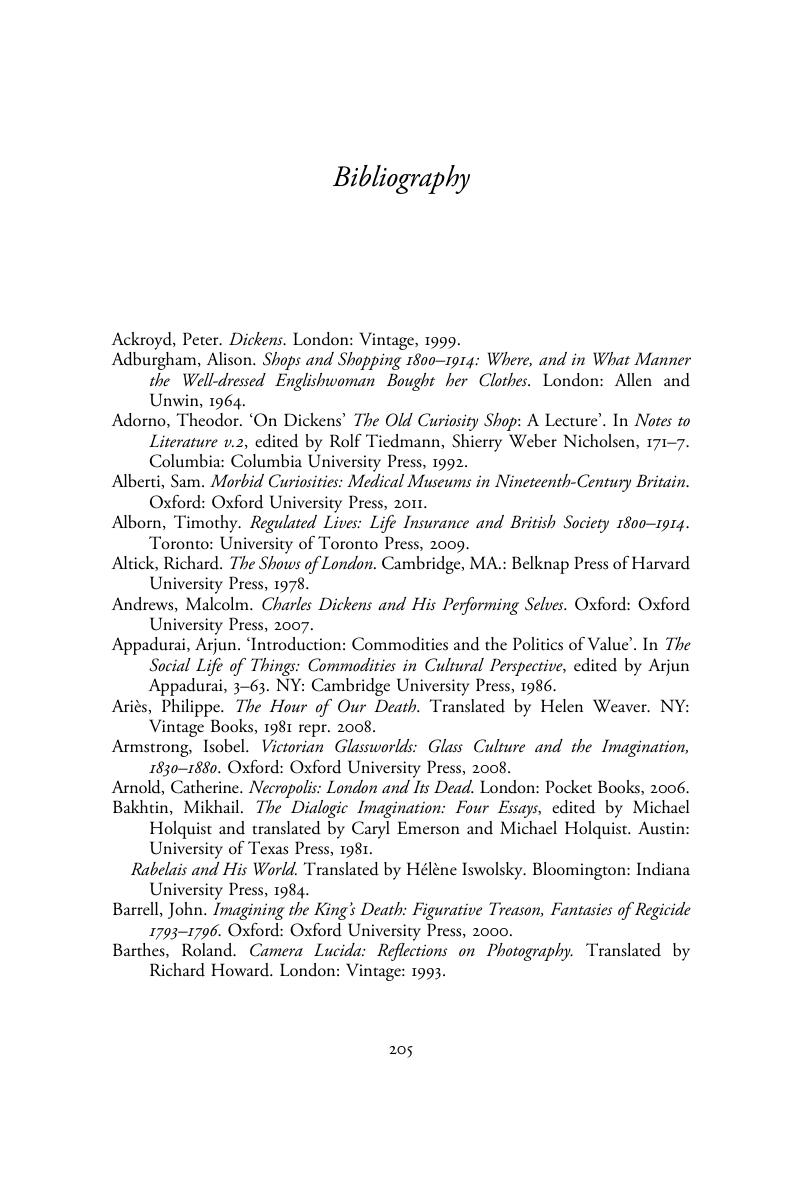Book contents
- Half title page
- Cambridge Studies in Nineteenth-Century Literature and Culture
- Title page
- Copyright page
- Dedication
- Contents
- Contents
- Book part
- Glossary
- Introduction
- Chapter 1 Profitable undertakings and deathly business
- Chapter 2 RevaluingThe Old Curiosity Shop
- Chapter 3 Death and property inBleak House
- Chapter 4 Parts and partings inOur Mutual Friend
- Conclusion
- Notes
- Bibliography
- Index
- Cambridge Studies in Nineteenth-Century
- References
Bibliography
Published online by Cambridge University Press: 05 March 2015
- Half title page
- Cambridge Studies in Nineteenth-Century Literature and Culture
- Title page
- Copyright page
- Dedication
- Contents
- Contents
- Book part
- Glossary
- Introduction
- Chapter 1 Profitable undertakings and deathly business
- Chapter 2 RevaluingThe Old Curiosity Shop
- Chapter 3 Death and property inBleak House
- Chapter 4 Parts and partings inOur Mutual Friend
- Conclusion
- Notes
- Bibliography
- Index
- Cambridge Studies in Nineteenth-Century
- References
Summary

- Type
- Chapter
- Information
- Dickens and the Business of Death , pp. 205 - 221Publisher: Cambridge University PressPrint publication year: 2015

